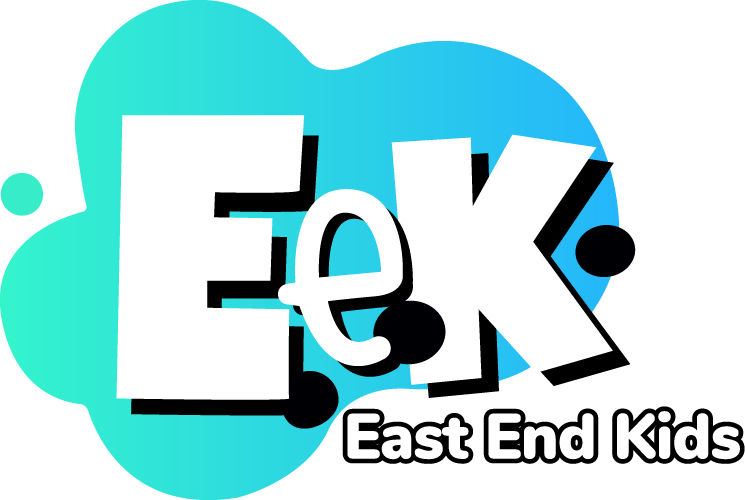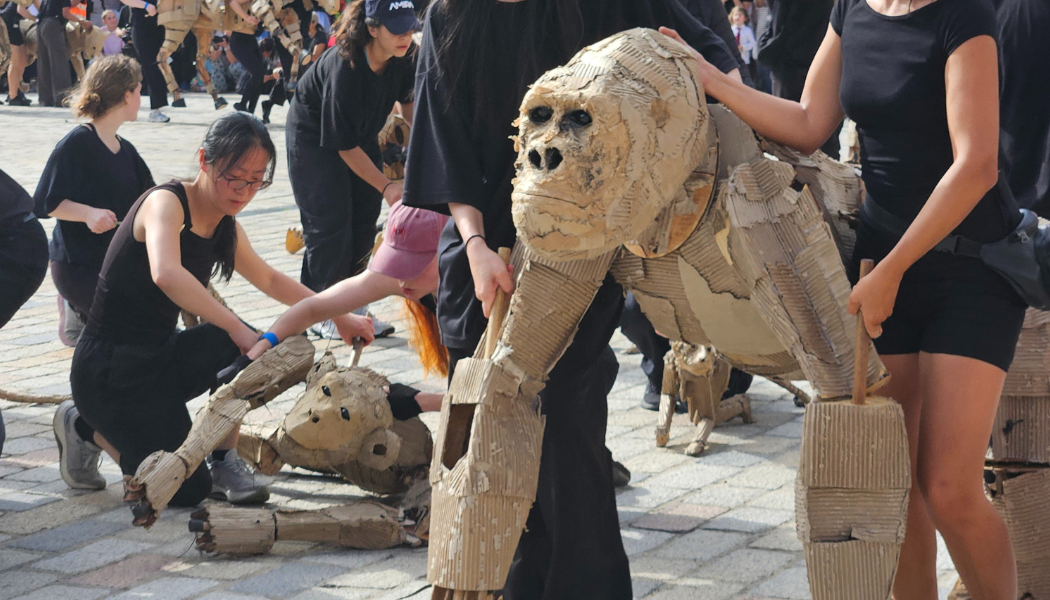Somerset House is easily one of the most beautiful spots in London on a summer evening. A cultural cut out in the hubbub of this busy city framing the bright blue sky in neoclassical style. This time, The Herds brought a dramatic urgency to the square.
We arrived for the special Friday Lates, the air was thick with anticipation as we awaited the arrival of The Herds, a migration of life-sized animals that had travelled from the Congo, stopping in London before heading North to the Arctic Circle.
Towering giraffes, expressive gorillas, antelope, and monkeys, crafted from recycled materials, filled the square, moving with astonishing grace and realism. Driven by a talented drummer beating an exceptionally fast trance-like rhythm, the animals ran in circles, looking panicked on their quest for a viable home.
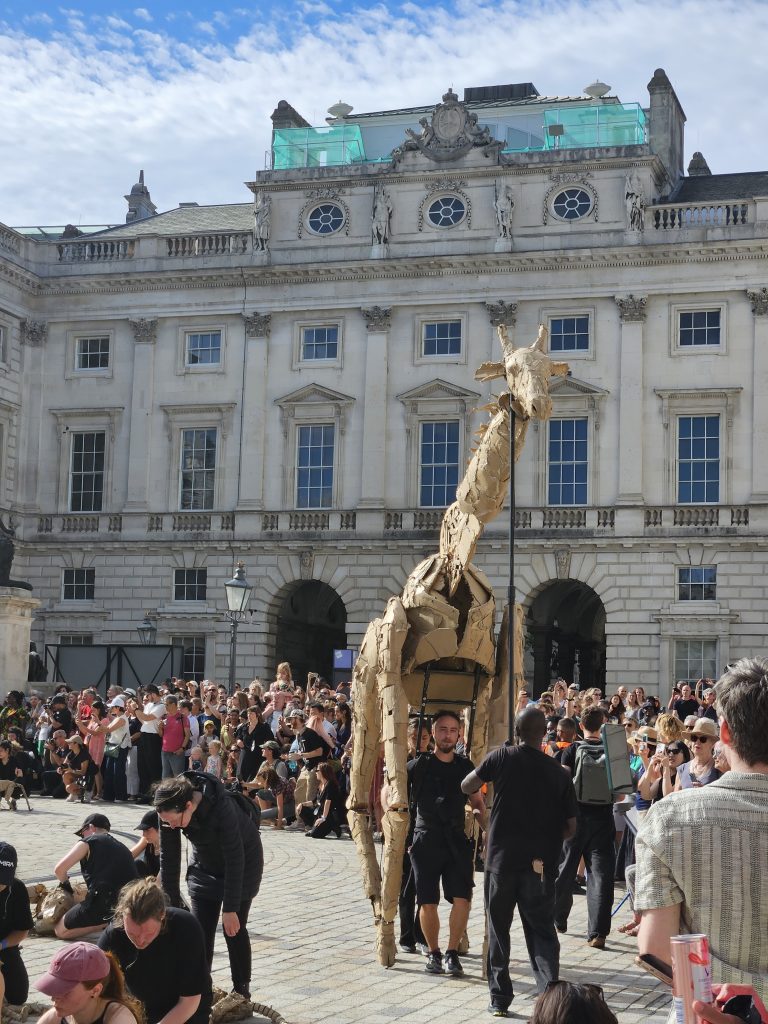
It’s no surprise The Herds is from the creator of Little Amal, The Walk Productions brings topics to light in accessible yet poignant and impactful ways. While Little Amal raises the volume of the refugee crisis, The Herds speaks to humanity of the peril of climate change in a visceral and tangible way. No words, just rhythm, movement, and puppetry; the animals are climate refugees symbolising the growing extinction crisis, leaving so many homeless.
After the performance, we wandered inside to explore the final days of the London Design Biennale. Now in its fifth edition, the Biennale once again filled Somerset House with powerful ideas and creative provocation from around the globe. The theme this year, Surface Reflections, curated by Dr Samuel Ross MBE, invited designers and artists to explore how identity, emotion, and history emerge through surface and form.
With a child in tow, we didn’t get to linger and read as deeply as we might have liked, but some pavilions stood out and stayed with us.
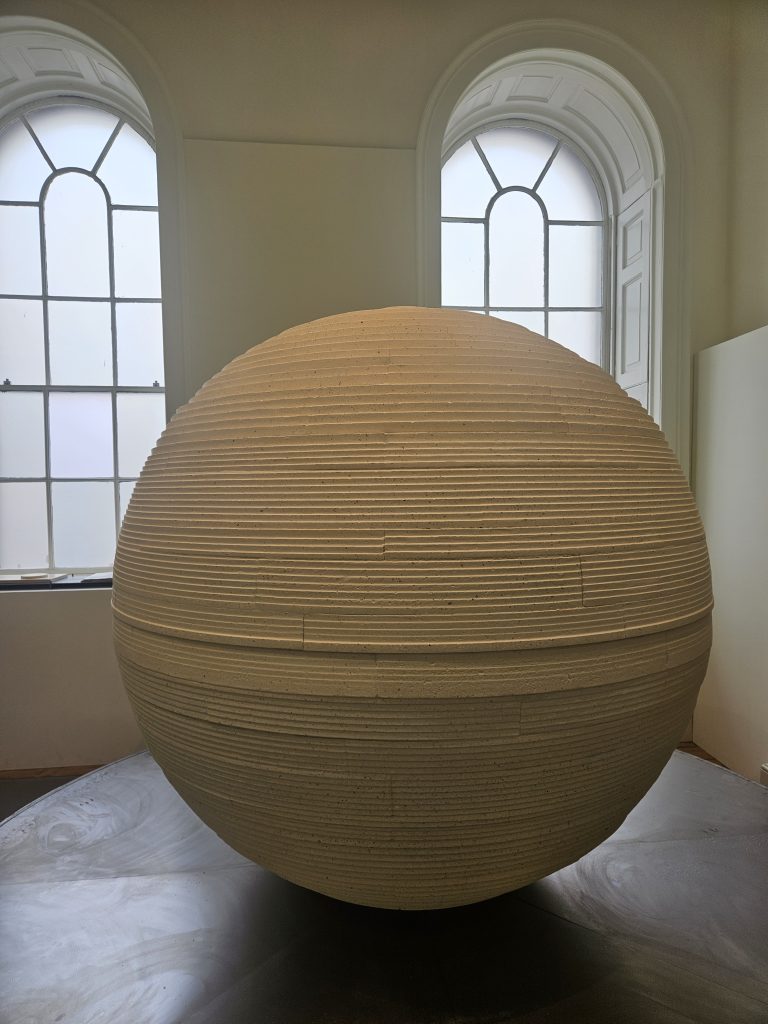
The Malta Pavilion’s URNA was a meditative and sculptural space exploring how we remember the dead. Inspired by Malta’s recent legalisation of cremation, it reimagined rituals like wakes and ossuaries through modern design. At the centre was a 1.8-metre sphere made of reconstituted limestone, in layers where cremated remains could be embedded. It was interesting to think about using cremated remains in ways that bring together shared living memories. One could imagine a family tomb evolving in layers over time.
Nigeria’s Hopes and Impediments, used speculative storytelling to explore how identity is shaped by collective memory and loss. At the heart of the pavilion was Lejja, a once-thriving iron-smelting community in Nigeria. Though the practice is now lost, the knowledge systems and social structures it built still resonate. The installation created a bridge between past and future, reminding us that design can recover suppressed histories and imagine new futures. My son and husband mostly enjoyed the interactive elements while I took in the sounds and rich colours.
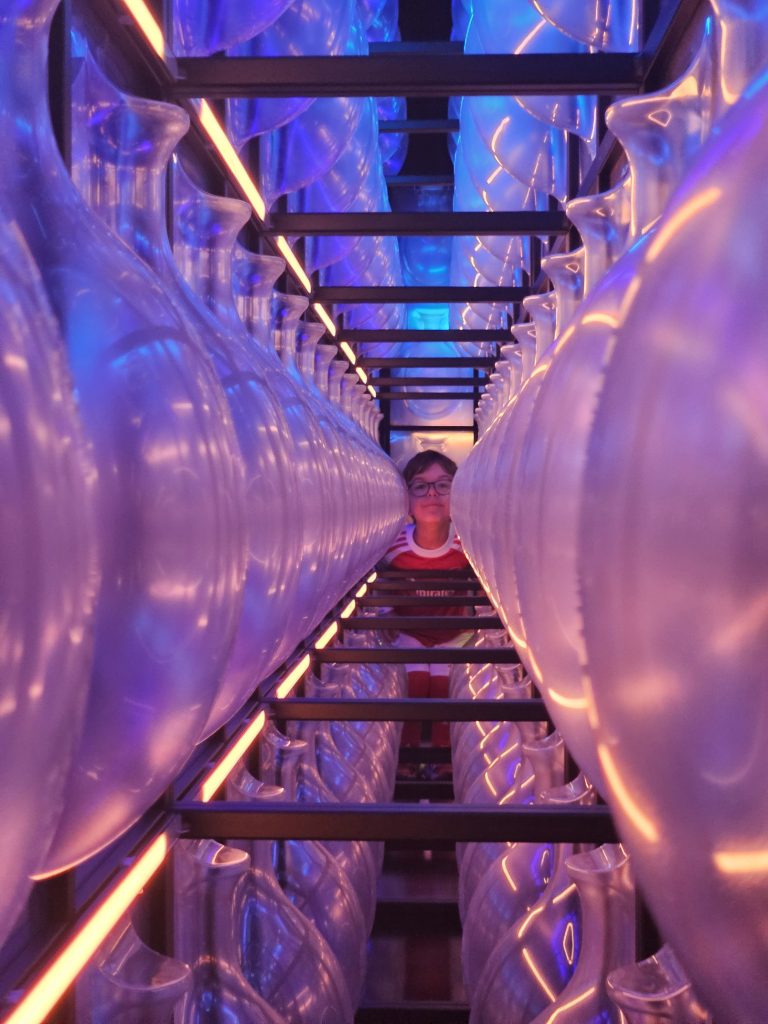
Oman’s Memory Grid reimagined traditional Omani pottery, once used for storing water, as vessels for preserving memory and data. These ancient forms became metaphors for what we choose to value and pass down. It asked powerful questions: How do we protect what matters most? How do our objects speak for us across generations? Rooted in tradition but speaking to today’s digital age, it was a subtle and moving reflection on legacy and resilience.
We ended our visit with the moving sound of the Hampton University Choir echoing through the courtyard.
The Herds and the London Design Biennale left a lasting impression on us all.
